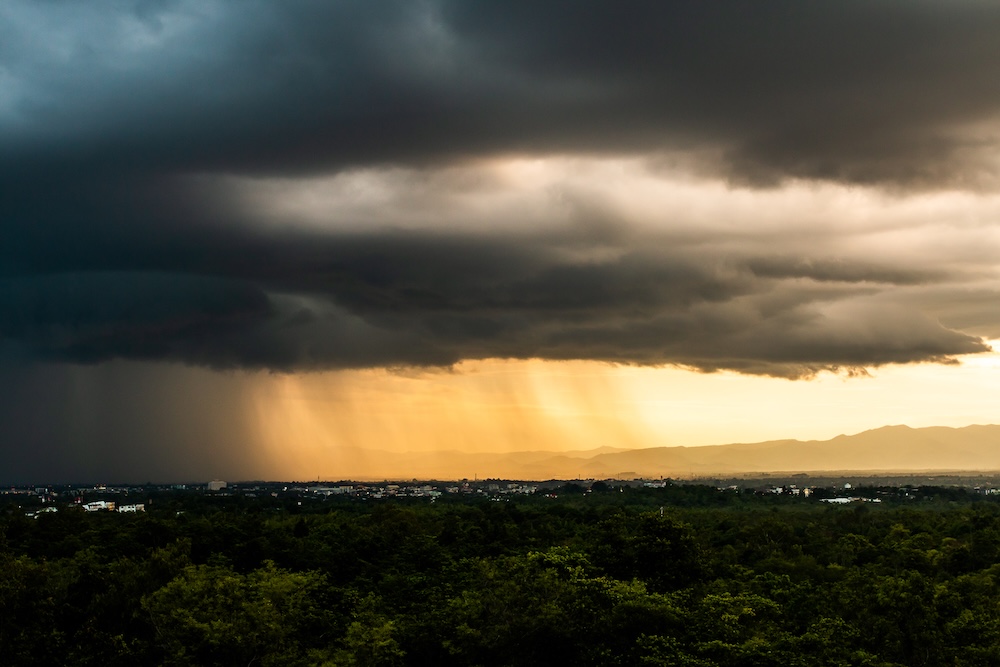Understanding the Climate Phenomena Behind Weather Extremes
Every few years, two climate patterns take turns shaping global weather: El Niño and La Niña. You’ve probably heard these names tossed around during wild hurricane seasons, scorching droughts, or record rainfall — but what are they really?
These two forces are part of a natural ocean-atmosphere cycle known as ENSO (El Niño–Southern Oscillation). Together, they influence temperature, rainfall, and storm behavior across the planet — often with severe and surprising results.
Understanding El Niño and La Niña is key to decoding many of the world’s recent weather extremes — including floods, wildfires, and even food shortages. Here’s what you actually need to know.
What Is El Niño?
El Niño is a warming of the central and eastern tropical Pacific Ocean, occurring roughly every 2 to 7 years. The name — Spanish for “The Little Boy” — refers to the Christ child, because it often begins around December.
What Happens During El Niño?
- Warm water pools in the eastern Pacific, near South America
- Trade winds weaken, reducing the usual westward flow of warm surface water
- Jet streams shift, disrupting global weather patterns
- Drier conditions hit Australia, Indonesia, and parts of Asia
- Wetter, stormier winters arrive in the southern U.S., parts of South America, and East Africa
Impacts of El Niño
- Increased flooding in southern U.S. and Peru
- Greater risk of wildfires in Australia and Southeast Asia
- Fewer hurricanes in the Atlantic (due to stronger wind shear)
- Hotter global temperatures — El Niño years often set global heat records
📌 Example: The 2015–2016 El Niño was one of the strongest on record, triggering droughts in Africa, fires in Indonesia, and coral bleaching across the Great Barrier Reef.
What Is La Niña?
La Niña — Spanish for “The Little Girl” — is El Niño’s cooler counterpart. It represents a strengthening of the normal Pacific circulation pattern.
What Happens During La Niña?
- Stronger trade winds push warm water even farther west
- Cooler-than-average water rises along the South American coast
- Jet streams shift northward, changing storm tracks
- Dry, warm winters hit the southern U.S.
- Wet and stormy conditions return to Australia and Southeast Asia
Impacts of La Niña
- More hurricanes in the Atlantic (due to low wind shear)
- Worsening droughts in the western U.S.
- More rain and flooding in Indonesia and Australia
- Cooler global temperatures (though still above pre-industrial levels)
📌 Example: The 2020–2022 La Niña lasted for nearly three years, contributing to back-to-back severe hurricane seasons in the U.S. and devastating floods in Pakistan and eastern Australia.
How El Niño and La Niña Affect You
These patterns might sound distant, but they affect everything from your grocery bill to your weekend forecast. They influence:
- Food prices: Crop yields suffer from droughts and floods
- Energy demand: Heatwaves and cold snaps increase usage
- Water supply: Snowpack and rainfall shift dramatically
- Natural disasters: Wildfire risk, flood frequency, and storm strength rise and fall with the ENSO cycle
And yes — they even help drive global temperature spikes. El Niño years are usually some of the hottest years on record, including 1998, 2016, and 2023.
Are El Niño and La Niña Caused by Climate Change?
No — these are natural climate cycles that have been occurring for thousands of years. However, climate change is supercharging their effects.
- A warmer atmosphere holds more moisture → more intense rainfall and flooding
- Hotter oceans → stronger storms and coral bleaching
- Greater land dryness → faster-developing wildfires and droughts
So while El Niño and La Niña aren’t caused by climate change, the consequences of each event are more extreme than in the past.
What’s Happening in 2025?
As of late 2025, El Niño conditions are weakening, with models suggesting a possible shift toward neutral or even La Niña by early 2026.
This transition could bring:
- More hurricanes in the Atlantic
- Cooler-than-expected temperatures in some regions
- Drier conditions in the southern U.S.
- Flooding risks in Australia and Southeast Asia
As always, exact impacts depend on location — but weather services around the globe are tracking the shift closely.
How Often Do These Cycles Happen?
- El Niño typically occurs every 2 to 7 years and lasts 9 to 12 months
- La Niña can follow El Niño or occur independently
- Sometimes we get back-to-back La Niñas (as in 2020–2022)
- Occasionally, the cycle enters a neutral phase with no dominant pattern
Forecasters use sea surface temperatures, wind patterns, and pressure readings to predict shifts — but timing and strength still carry a lot of uncertainty.
Why Should You Care?
Understanding El Niño and La Niña is more than trivia. It helps explain:
- Why your region is facing strange weather
- What crops might rise or fall in price
- Why hurricane season looks more intense some years
- When wildfire conditions may spike
- How heatwaves, floods, and droughts tie together
It’s one of the clearest examples of how a local weather event is often tied to a global pattern. And in a world with climate change, that global pattern now carries even more power.
Conclusion
El Niño and La Niña are Earth’s atmospheric heartbeat — natural rhythms that shape how we experience weather around the world. But in the era of climate change, that heartbeat is pounding louder.
As sea temperatures rise and weather extremes become more intense, it’s more important than ever to understand the difference between these two forces. Because whether you’re a farmer, policymaker, or someone just wondering why it won’t stop raining, these patterns are the hidden drivers behind much of what we feel — and fear — in a changing climate.









Reader Interactions